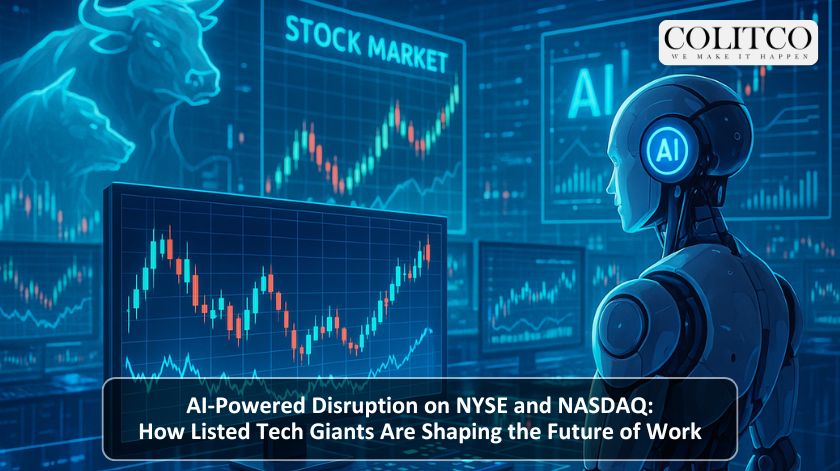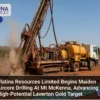Introduction: AI Takes Centre Stage on Wall Street
Artificial intelligence (AI) was an experimental field in the past. At present, it is simultaneously shaping industries, labour markets, and capital markets. On the NYSE and NASDAQ, the biggest disruptors are the companies with whom there is a global AI race: Microsoft, Nvidia, Alphabet, and Meta.
Each company is investing billions of dollars in integrating AI into new products, infrastructure, and workplace solutions, with the scope encompassing enterprise productivity, healthcare, finance, and manufacturing. Hence, to an investor, AI stocks are more than just growth stocks; they are their roadmap into work going forward.
AI is that well-worn old tale in the realms of global labour markets. Rather than outright replacement, jobs are being transformed by AI, new categories are being created, and the enhancement of efficiency is being achieved. It is the next decade in the life of those professionals who shall be undergoing transformations into AI-augmented workflows. The next decade for investors will be defined by the quest to pick the correct players.
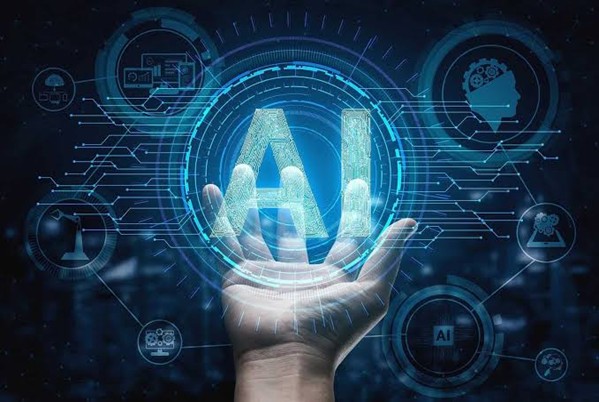
AI race led by Microsoft, Nvidia, Alphabet, Meta on NYSE and NASDAQ.
Microsoft: Redefining Enterprise Productivity with AI
Microsoft is the very company that has become synonymous with enterprise adoption of AI. Its multibillion-dollar accord with OpenAI signalled the beginning of the strategic shift. Microsoft began rolling out generative AI into common productivity tools by integrating it into Bing and Microsoft 365.
The rollout of Microsoft Copilot illustrates this shift. Employees draft emails with AI assistance. They summarise meetings and also generate reports. Work that used to take hours is now executed in minutes. Businesses using Copilot are reporting efficiency gains within almost every department, from HR to sales.
The ambitions of Microsoft stretch beyond office tools. Azure Cloud hosts AI models at scale, providing infrastructure for enterprises building their own AI solutions. This dual strategy of AI in everyday tools plus AI as a service has made Microsoft a leader in enterprise AI.
The industry analysts point to this caution in Microsoft. Harvard Business Review stresses that transformation will not happen overnight. Enterprises must realign workflows, retrain vendors, and establish governance models before AI realises its true value. The approach of Microsoft nicely walks the fine line of aggressive innovation that is convincing enough for conservative adoption, therefore building long-term trust.
To the investor community, the steady stream of capital investment by Microsoft must be perceived as a strong vote of confidence that AI is at the centre of future earnings. To its employees, it means AI is nutrition for daily collaboration rather than some far-off concept.
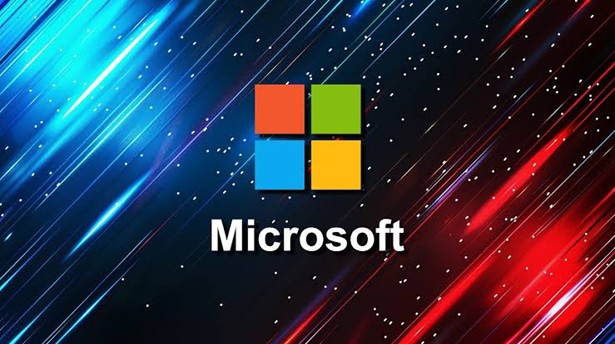
Microsoft leads enterprise AI with OpenAI deal, adding generative AI to Bing and 365.
Nvidia: The Backbone of the AI Revolution
If Microsoft drives adoption, Nvidia powers the infrastructure. With up to an 80 % share in AI chips for training and deployment, its GPUs enjoy supremacy across the globe. The capabilities of these processors stretch all the way from large language models to autonomous vehicles.
An illustration that Nvidia’s valuation is basically downstream of its operative status is being able to cross above 4 trillion US dollars in market capitalisation, making it the first-ever semiconductor company to do so. Thus, cementing Nvidia’s position as the most important hardware stock of the decade from a NASDAQ perspective.
Jensen Huang envisions that every company will be an “AI factory”. According to this model, companies will no longer just produce goods or services; creating intelligence will be in itself a product. It is based on this view that Nvidia is making a bet on robotics, industrial automation, and sovereign AI infrastructure.
The world of automakers already makes the industrial case for Nvidia. General Motors uses Nvidia chips and software to transform its factory and advance its autonomous driving efforts. This partnership is an embodiment of the idea that AI chips are not just tools for big tech; anyone in a capital-intensive industry uses them to usher in a new era.
More importantly, Huang resists the framing of job destruction on a mass scale. He argues that disruption occurs only when industries run out of ideas. If innovation continues, AI will create new categories of employment in robotics engineering, chip design, and data governance.
For investors, Nvidia represents the purest AI infrastructure play. For economies, it symbolises how hardware innovation drives industrial renewal.
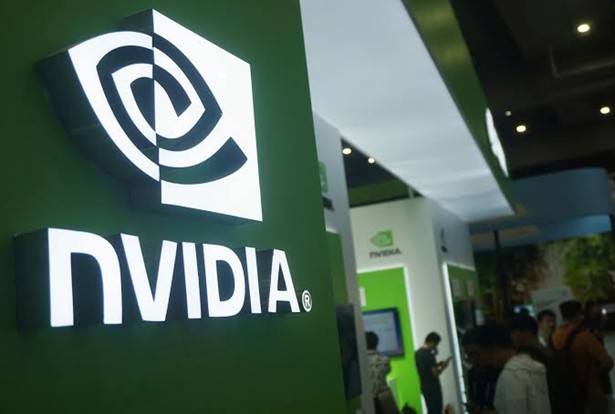
Nvidia dominates AI chips with 80% share, fueling models to autonomous vehicles.
Alphabet: AI in Healthcare, Infrastructure, and Data
Alphabet remains a diversified AI player. An ecosystem arises from embedding AI in healthcare, enterprise infrastructure, and consumer applications using Google Cloud, DeepMind, and Verily.
DeepMind’s AlphaFold has revolutionised biology by predicting protein structures, enabling drug discovery, and diagnosing diseases. Thus, the company is positioned as a pioneering force in healthcare innovation, an industry expected to be worth trillions as populations age.
Competitive advantage is held by Alphabet in infrastructure. It claims its tensor processing units (TPUs) to be an alternative to Nvidia’s GPUs, surely a cheaper and better option for training AI at scale. This decreases dependence on third-party suppliers and enhances Alphabet’s vertical integration.
One of the truest indicators is in capital expenditure. For 2025, a $10 billion increase was reported in spending on AI Infrastructure by Alphabet. These funds, in contrast to short-term investments, go directly towards creating long-term capacity for large-scale AI adoption.
The Alphabet headcount also tells the story. Whilst tech companies undergo radical restructuring efforts, Alphabet hires engineers to meet the demands of AI. This development is a bullish signal for investors, who see it as evidence that AI will continue to be integrated across industries.
With its global reach, Alphabet applies AI to logistics, cloud services, and search algorithms. In each case, the goal is not just efficiency but strategic dominance.
Meta: From Social Media to Immersive AI
Meta’s AI journey is rather different from that of its peers. The company, formulated around Facebook and Instagram, has now been rebranded as one that engenders AI-driven social experiences and immersive workspaces.
Content moderation, personalisation algorithms, and advertising platforms: all these are AI systems working for Meta. As a result, campaigns can be better targeted with smoother user experiences, eliminating the presence of harmful content. AI optimisation, for a company built on advertising revenue, hence, means better margins straight away.
The company is also dipping into AR and VR. With Horizon Worlds and enterprise metaverse projects, Meta is envisioning a workplace wherein teams can work through immersive environments. Think: AI will animate avatars, run digital assistants, and offer workflow suggestions.
This two-pronged approach–advertising optimisation and immersive enterprise–situates Meta right at the juncture of consumer and workplace AI. For investors, Meta stands to act as a bridging social platform and enterprise collaboration tool.

Meta shifts from social media to AI-driven experiences and immersive workspaces.
Workforce Impact: Jobs Transformed, Not Erased
The debate about the workforce remains front and centre. Will AI wash away jobs or mould them instead? Current veracity talks of transformation rather than obliteration.
According to Nvidia’s Jensen Huang, jobs are lost only when industries stop innovating. Continuous cleverness means continually creating newer job categories: AI trainers, ethicists, compliance officers, and automation strategists.
It again alludes to precedents from the past industrial revolutions. Machinery did take away manual labour but created whole fields in mechanical and civil engineering. Similarly, AI will take away a lot of repetitive tasks and, in exchange, will create demand for oversight, creativity, and strategic jobs.
So, the hybridisation model emerges, wherein AI takes care of repetitive jobs, giving humans space for leadership, empathy, and innovation. The precise balance becomes the AI-extended workforce.
Investor Outlook: Why AI Stocks Dominate NYSE and NASDAQ
The NYSE and NASDAQ host the companies leading the AI revolution. For investors, these stocks are more than technology plays-they are strategic bets on the future of work.
Microsoft, Nvidia, Alphabet, and Meta are the giants spanning applications, hardware, infrastructure, and consumer AI. Their combined influence shapes global markets in industries as varied as health care and energy.
Market analysts expect explosive growth. Morgan Stanley thinks that AI adoption can add nearly $16 trillion to global markets. S&P 500 could see a 30% uplift as AI brings in efficiencies and fresh revenue streams.
This is not hype; this is a real structural transformation. Companies deploying AI record double-digit growth in productivity. Enterprises using generative AI in marketing and operations speed up turnaround and improve margins.
However, investors must also take into account the risks. Very high capital expenditures, regulation, and competition may create volatility. Managerial returns may not be of present-day mediation since AI infrastructure would need scaling over the years before mass monetisation. Holding for decades is the game and not for short spurts.
For portfolios, exposure to AI stocks on the NYSE and NASDAQ is now considered essential. The world’s most powerful companies are betting on AI. Investors who align with these trends are positioning for long-term growth.
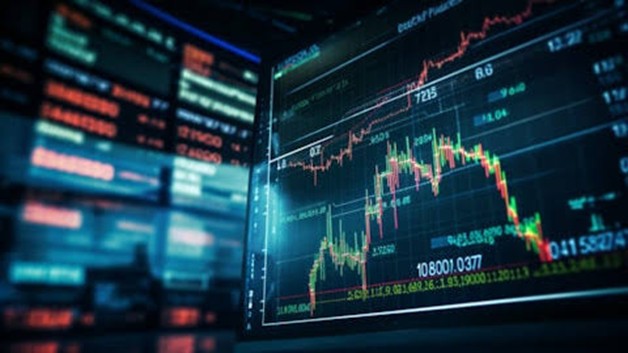
NYSE and NASDAQ host AI leaders, offering investors strategic bets on the future of work.
Healthcare: AI’s Most Promising Frontier
Thus, AI plays a critical role in creating healthcare interventions. The global market for AI healthcare is expected to exceed $200 billion by 2030. Listed companies invest tremendous sums today to seize that opportunity.
DeepMind and Verily, both subsidiaries of Alphabet, lead in predictive diagnostics. AlphaFold’s protein-structure prediction accelerates drug development to the brink of billion-dollar savings, meanwhile. Hospitals use Google Health systems for operational optimisation and patient tracking on wait times.
Microsoft Azure houses AI-powered electronic health records. These detect anomalies in scans and billing and perform other charting tasks. For providers, such AI reduces burnout and increases accuracy.
Nvidia GPUs are indispensable for medical imaging AI. Hospitals employ their massive processing power with radiology, pathology, and genomic sequencing. From research labs to clinics, the Nvidia Clara platform broadens the reach of AI in healthcare, from possibilities in smart imaging to digital twins of the human body.
AI RPM systems are disrupting elderly and chronic care. They feed real-time health data to cloud platforms where AI analyses trends and alerts doctors to impending emergencies. This improves patient outcomes while reducing system costs.
The investor takeaway is clear: healthcare AI is not just transformative—it is commercially viable. The companies driving these solutions are NYSE and NASDAQ leaders, offering exposure to a fast-growing sector.
Finance: Efficiency and Risk Management in Real Time
The exchange of trillions at a global level constitutes another domain where forging ahead of AI adoption has accelerated.
By scanning millions of transactions for anomalies, banks detect fraud with AI within milliseconds. Risk modelling has become more acute so as to lessen exposure to default and market volatility. AI-powered trading platforms can detect patterns and trade much faster than any human analyst.
Microsoft and Alphabet offered cloud-based AI infrastructures for the big banks. The platforms host risk models, compliance systems, and trading applications. With the use of these tools, financial institutions save greatly on costs and make better decisions.
On the customer service front, AI performs heavy lifting. An NLP-empowered chatbot will solve your queries in an instant and will thus preclude the need for having tens of thousands of representatives on call. This means saving up a huge amount of money, and can even add to the delight of customers.
Investors like this for a simple reason: it reduces costs and fortifies risk resilience for an industry in which margins are perpetually being contorted. NASDAQ and NYSE firms enabling these solutions, primarily Microsoft and Alphabet, are on a path that will reward shareholders with steady returns.
Global Impact: Manufacturing, Supply Chains, and Education
AI disruption is not solely centred in Silicon Valley or Wall Street. It is reshaping international supply chains and manufacturing hubs.
Once centred on assembling Apple iPhones with many of its sites in China, Foxconn is shifting towards producing AI servers. This, in turn, created a number of new jobs across Taiwan and in North America. The same kind of transitions are happening in Europe, where demand for AI infrastructure is creating jobs in the semiconductors and robotics industries.
Education must adapt accordingly. Governments and institutions ensure that AI literacy, data science, and ethics find their place in curricula. Workers must hence be trained in the management of AI systems, rather than simply their usage.
Emerging economies face a distinctly different set of challenges. Demand for outsourcing in Asia may diminish as AI will be able to substitute for persons performing routine back-office functions. On the other hand, the regions will find it very correctly to their advantage if they can position themselves as centres for hardware manufacturing and AI services. This is a worldwide redistribution of labour, not just a localised one.
Sustainability and Ethical AI: The Next Challenge
As the level of adoption of AI increases, questions of sustainability and ethics come front and centre.
Training AI models, with their immense energy requirements, has sometimes been compared to powering small towns. Microsoft and Alphabet are offshoring the energy consumption into renewable energy options, while Nvidia is proposing chips with very high efficiency to lower carbon footprints.
Ethics is another point of contention. Algorithmic bias can cause discrimination within hiring, lending, or even health-care outcomes. Corporations are employing AI ethicists to de-bias systems and point toward a fairer approach.
For investors, this is a new risk factor. Beyond the long-term growth of companies implementing AI responsibly will be the short-term disgrace, penalties, and media frenzy visiting companies that neglect sustainability and ethics.
Investor Takeaway: Balancing Risk and Reward
Two major lessons emerge concerning AI stock amid the trading frenzy on the NYSE and NASDAQ.
First of all, AI has become a long-term growth driver. Microsoft, Nvidia, Alphabet, and also Meta control their respective space with trillion-dollar opportunities. Secondly, there is patience required. AI is front-loaded, intense, and profits can come nearly a decade later.
Those investors who understand this cycle, akin to the dawn of the internet boom, have the clout that best positions them in the present; some of the leaders of today are working to build the infrastructure and applications of tomorrow.
Also Read: OpenAI Unveils GPT-5: Advanced AI Model Now Accessible to All ChatGPT Users
Conclusion: The Blueprint for AI and the Future of Work
It is being said that artificial intelligence is not substituting humans but partnering with them. On the NYSE and NASDAQ, these transformations are being driven by Microsoft, Nvidia, Alphabet, and Meta.
Their investments affect all spheres of society: enterprise productivity, health care, finance, manufacturing, and education. For the investors, these firms are no ordinary technology stocks; they are the bedrock of the next chapter of the global economy.
AI for workers equals change. Along with the automation of routine jobs, opportunities will arise in supervision, creativity, and management.
How well AI integrates into work and life is yet to be decided in the coming decade. But one thing is clear: the pen has already been put to writing with ink, line by line, algorithm by algorithm.

